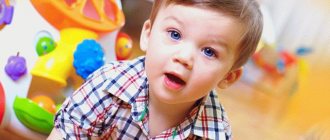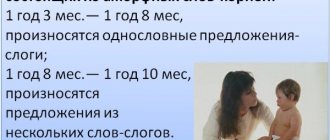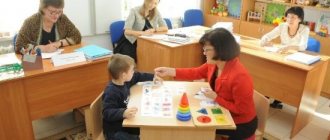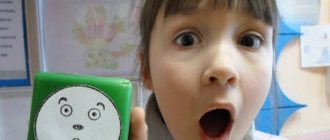Speech therapist diagnoses
In recent years, unfortunately, speech disorders in children are becoming more and more common. A pediatrician, neurologist, or psychologist can identify speech development disorders at their appointments. The speech therapist diagnoses speech development, collects anamnesis and, on this basis, makes a speech therapy conclusion. What diagnoses can a speech therapist make and what directions in the correction of speech defects are important to consider to compensate for them will be discussed in this article.
ZRR
– delayed speech development. This is a pathology that occurs in children with intact intellectual abilities, in which the timing of the appearance of speech is disrupted, there is a poor vocabulary, pronunciation defects, and the grammatical design of speech and the formation of sounds suffer. Sometimes parents do not notice the delay in the child’s speech development. They believe that speech will appear spontaneously, until they realize that their baby speaks much less and worse than his peers. His speech appears late or develops slowly and is difficult to understand. He cannot voice his thoughts, although he understands what is said to him. During the consultation, the speech therapist determines the degree of delay in speech development, recommends a consultation with a neurologist (to exclude severe organic disorders), and may also refer you for a consultation to an ENT specialist (for a hearing test), a pediatrician (indicators of general physical health are also important for the timely development of higher mental functions). Children with speech development delays are recommended to take logorhythmic classes, classes with a psychologist, speech therapist (group and/or individual) to stimulate speech activity.
Alalia
is a systemic underdevelopment of speech, which is based on difficulties in language acquisition. This is an organic disorder of a central nature, in which there is a delay in the maturation of nerve cells in certain areas of the cerebral cortex. Alalia is caused by organic lesions of the speech areas of the cerebral cortex in the intrauterine development of the fetus or the early period of child development. The child’s speech develops with gross deviations or does not develop at all. A comprehensive examination by a neurologist, ENT specialist, psychiatrist, or pediatrician will help make a diagnosis. During the consultation, the speech therapist determines the form of alalia (motor, sensory, mixed) and recommends visiting a speech therapy kindergarten. Classes for alalia with a speech therapist, defectologist, neuropsychologist, psychologist are mandatory and should be regular, systematic and under the supervision of a neurologist.
ONR –
general speech underdevelopment. This is a systemic disorder in which the formation of all components of speech suffers. The child speaks, but speech suffers at the sound, syllabic, and grammatical levels; the semantic component of both understanding speech and independent speech expression is disrupted. It can act as an independent disorder, or as part of other disorders, or be a consequence of other speech pathologies. Experts distinguish 3 (4) levels of OHP. Correction of this disorder most successfully takes place in a speech therapy kindergarten or in a speech therapy group in a kindergarten. Observation by a neurologist and, as part of general correctional work, classes with a neuropsychologist or defectologist are recommended.
Dysarthria
- occurs as a result of organic damage to the central nervous system, brain in the prenatal or early period of a child’s development and manifests itself in a violation of the pronunciation side of speech. The main clinical signs of dysarthria are impaired muscle tone in the speech muscles, limited possibility of voluntary articulatory movements (movements of the speech organs), impaired voice production and breathing. Speech dysarthria can be an independent speech defect, and can also be part of more complex speech disorders. Dysarthria is the case when people say “porridge in the mouth.” The pronunciation side of speech and sound pronunciation suffer greatly. Parents may notice not only unclear pronunciation of sounds, but also lack of coordination in children, clumsiness, untidiness, awkwardness in articulation and fine motor skills; There may be increased salivation (salivation of varying degrees), possible asymmetry in the work of the muscles of the tongue, cheeks (when sticking out the tongue and performing specified movements, puffing out the cheeks, etc.), nasalization of the voice (nasal, nasal tone of speech). During diagnosis, a speech therapist determines the type of dysarthria, paying attention to the state of the muscles of the articulatory apparatus (hyper/hypotonicity) for the correct selection of the type and methods of articulatory massage. Correction of such a disorder will be more successful if a neurologist, physiotherapist, massage therapist, exercise therapy specialist, and neuropsychologist participate in the work. Children are recommended for regular speech therapy sessions using speech therapy massage and taping.
FFNR
– phonetic-phonemic speech disorder. This is a disruption of the processes of formation of the pronunciation side of the native language in children with various speech disorders associated with impaired perception (phonemic hearing) and pronunciation of sounds. This category includes children with normal hearing and intact intelligence.
The speech of a child with FFDD is characterized by multiple sound substitutions, confusions, omissions, distortions of sounds (tea - tai, brush - mesh, cat - koska, scooter - famokat, furniture - nebel, astronaut - kosenat, etc.) Impaired reproduction of sounds in a child with such pathology is associated with insufficient discrimination of both those sounds whose pronunciation is impaired, and those that are pronounced correctly, but belong to different phonetic groups. Along with this, the child has errors in the syllable structure and sound content of words (button-button, code-frying pan, niga-book, mot-bridge). That is, the child can skip entire syllables, rearrange them, and skip sounds in words. The success of correctional work with such a disorder depends on regular, systematic individual sessions with a speech therapist.
Stuttering in children is a disorder of the tempo-rhythmic aspect of speech, caused by repeated convulsions in the articulatory, vocal or respiratory parts of the speech apparatus. Stuttering in children is characterized by “getting stuck” on individual sounds, their repeated, involuntary repetition, accompanying movements, speech tricks, logophobia, and vegetative reactions. Children with stuttering should be examined by a neurologist, speech therapist, psychologist, or psychiatrist. Correction of stuttering in children includes a medical and health complex (compliance with the regimen, compliance with neurologist’s prescriptions, massage, exercise therapy, psychotherapy) and a system of speech therapy classes.
Dysgraphia, dyslexia
– writing impairment, reading impairment.
Dysgraphia is a violation of written speech skills, when partial difficulties arise in mastering writing. Characteristic signs are persistent, repeated errors in writing (mixing letters based on similar characteristics, omissions of letters, “mirror” writing of letters, omission of letter elements, kinetic errors).
Dyslexia
- This is a violation of the formation of reading skills. It is associated with difficulties in the formation of speech components and improper operation of the analyzing systems (the child may mix up letters while reading, there may be a violation of reading the syllabic structure of a word, while reading, the student makes mistakes in letters that have similar optical features, has difficulty assimilating the visual image of the letter , violation of grammatical forms when reading, reading by guess, the student poorly and for a long period of time connects letters into syllables or spends a long time on the syllabic type of reading).
Errors have a different nature and the form of dysgraphia and dyslexia will be determined by a speech therapist during diagnosis. To complete the information, it is also important to consult a neurologist, ophthalmologist, ENT specialist, or neuropsychologist. This diagnosis is given to schoolchildren, but the prerequisites for writing and reading disorders may appear in the preschool period. Parents should pay attention if:
- the child is unable to hold the spoon and writing utensils correctly for a long time;
- he poorly distinguishes and reproduces sounds;
- speech develops more slowly than that of peers or does not correspond to age standards;
- there are problems with the development of fine motor skills;
- there are disturbances in coordination of movements;
- difficulties with maintaining attention (the child needs to frequently switch to different types of activities);
- the child quickly gets tired of activities.
In preschool and school age:
- the child encounters difficulties in reproducing rhythm and memorizing poetry;
- difficulty repeating a series of syllables or numbers;
- the child ignores signs and letters on the left or right;
- difficulties with remembering letters and writing them;
- the child has difficulty merging letters into syllables and has difficulty reading words out loud;
- sees one thing and pronounces something else (letters, words, numbers);
- reading by guesswork, reading fluency is impaired, difficult to read complex words, distorts words when reading, lacks expressiveness, poorly understands the meaning of what is read;
- replaces, rearranges, mirrors letters and numbers, omits letters, does not add words, syllables, distorts words, adds extra letters or syllables;
- the child has poor handwriting, does not see the boundaries of the sheet, does not follow the boundaries set by the teacher when writing;
- cannot determine the boundaries of words and sentences;
- knows the rules but forgets to apply them when writing.
Classes for the correction of dyslexia and dysgraphia are conducted by a speech therapist. It would be right to include classes with a neuropsychologist.
Speech therapy speech disorders. Speech disorders
In Russia now:
In 2021, the head of the Ministry of Education and Science, Olga Vasilyeva, spoke about the problem of increasing the number of speech pathologies. She called on the regions to increase the number of positions for school psychologists and speech therapists. According to the minister, today 58% of children have speech therapy problems. At the same time, there are 850 students per school teacher-psychologist, and 420 children in kindergartens. 2021
In the 2000s, more detailed studies were carried out in St. Petersburg by the Psychological and Pedagogical Institute. We examined 580 children of preparatory groups (children of six years old) from 44 ordinary district kindergartens according to a unified scheme (state of sound pronunciation, vocabulary, development of grammar and inflections, simple sound analysis of words).
“The results of the study showed that 52.5% of children had sound pronunciation defects, and 16.7% of this number were complete sound substitutions, indicating the non-disappearance of “age-related tongue-tiedness” and being an undoubted prerequisite for articulatory-acoustic dysgraphia. The remaining 35.8% were mainly erased and severe dysarthria.
Regarding the state of sound pronunciation, an alarming fact is that even in the younger groups of kindergartens it is no longer possible, since almost every third child has pathological forms of sound pronunciation disorders. Thus, of the 145 examined children aged 3 to 4 years, 20% had an erased form of dysarthria and 10.3% had mechanical dyslalia, which is a total of 30.3%.
Along with this, it was revealed that 21.5% of children in preparatory groups had a vocabulary that lagged behind the norm, 25% had an undeveloped inflection function (normally it should be formed by about 4 years) and 61.6% had a word formation function (in Normally, a child masters the basic methods of word formation by the beginning of school). In addition, even the simplest forms of phonemic analysis of words turned out to be inaccessible to 25% of those examined" (Speech therapy: a textbook for students. defectology. faculty. pedagogical institutions of higher education. Institutions / edited by L.S. Volkova. - 5th ed., revised and supplemented - M.: humanitarian publishing center VLADOS, 2006.)
2000. Research by Filicheva T.B.: Speech underdevelopment in preschool children - 40-50% (out of 5128 preschoolers, 948 children with ODD, 1794 children with FFND and other pathologies).
Total: 58 – 61% of all violations.
In the USA and Europe now.
2006 According to the American National Institute on Deafness and Other Communication Disorders: more than 5% of American children aged 6-7 years were diagnosed with various speech disorders, and approximately 2.5% of children under 5 years old had stuttering.
Here we should add a specific language disorder (in our country it is called motor alalia) 8 - 10% of children.
Total: 15 – 18% of all speech disorders.
Comparison with how it used to be in the USSR.
Statistics of the 50s of the 20th century in the USSR. Sound pronunciation disorders - about 17% (preschoolers and primary schoolchildren). Dysgraphia (primary schoolchildren) – 6%.
Statistics of the 2000-2010s of the Russian Federation (Moscow and the region, St. Petersburg and the region). Sound pronunciation disorders 52.5%. Dysgraphia (primary schoolchildren) – 37%.
Also from the textbook “Speech Therapy” by Volkova - with reference to Khvattsev.
Total: the number of violations increased by 3–6 times.
Statistics analysis
- “in recent decades (...) there have been profound socio-economic, environmental and other changes in our reality, which have led to a sharp increase in various types of pathologies in children and adults, including speech. (...) the situation is such that in many cases it is necessary to take the most urgent measures to level out a very difficult and complex situation.”
(Speech therapy: textbook for students. defectology. faculty. pedagogical higher education institutions / edited by L.S. Volkova. - 5th ed., revised and additional. - M.: humanities publishing center VLADOS , 2006. )
Many parents reason like this: so what if my child speaks incomprehensibly (“not enough”, “badly” - insert your own) when all the children around him say the same thing. As one mother wrote on her blog: “We get so used to living among the norm that we cease to realize that this is not the norm!”
What is the reason for the increased number of speech disorders according to ordinary speech therapists:
- salary 11 thousand rubles. per month differs from the salary in the USSR - when speech therapists received the same salary as engineers. Many good specialists have left;
- Reducing the rates of speech therapists in kindergartens, schools, and clinics;
- Reduction of kindergartens and schools of TNR;
- Appointments with speech therapists in clinics instead of 2 years at 5 years;
- Reduction of speech therapy classes in government institutions from 1 academic hour to 15 minutes;
- Increasing the number of children in the ONR speech group from 12 to 18 children (without increasing the speech therapist’s working hours). Previously, in the 30s - 50s there were only 5 people in the logo group;
- The emergence of combined (integrated) logogroups - where all speech disorders are located together;
Delayed speech development - symptoms and treatment
Classes with a speech therapist. The speech therapist conducts special lessons with the child on the initiation and development of speech, and helps to construct sentences correctly. Such techniques include articulatory gymnastics, sound production exercises, and play techniques, such as finger puppet theater. If a child understands phrases, his intelligence is preserved, and his speech is delayed by six months to a year, then speech therapy classes are sufficient [1][8].
Classes with a speech pathologist-defectologist differ from regular speech therapy classes. For example, a speech pathologist is able to work with children who have difficulty understanding speech and severe developmental delays. During classes, the child learns basic concepts (big/small, color, shape, size), does exercises to improve fine motor skills, and learns the names of objects to form a passive vocabulary. After mastering basic knowledge, the speech therapist-defectologist begins to develop expressive speech [7][12][15].
Comprehensive medical and pedagogical rehabilitation for delayed psycho-speech development. If a child does not understand speech well, is excitable, and has not developed social and everyday skills, then comprehensive rehabilitation may be required. In such cases, speech significantly lags behind the age norm, diction is grossly impaired, and other neurological symptoms are expressed [2]. To develop speech, neurologists prescribe nootropic drugs: Cortexin, Cogitum, Ceraxon. According to the manufacturers, the drugs activate neurons, improve the transmission of nerve impulses and eliminate the effects of hypoxia - lack of oxygen. (The effectiveness of these drugs for delayed speech development has not been proven in studies, and in the new Russian clinical guidelines for the treatment of autism, a group of experts has already described nootropics as an ineffective method of treating the disorder - editor's note at ProBolesny). B vitamins will also help normalize the functioning of the nervous system. However, it is important to remember that only a pediatric neurologist prescribes medications, taking into account the characteristics of the child, since medications can cause overexcitation and allergic reactions [2][16].
Microcurrent reflexology is a method of treating children with speech delays, approved and recommended by the Ministry of Health of the Russian Federation. It consists of selective activation of speech areas of the brain:
- Wernicke's area (responsible for speech understanding);
- Broca's area (associated with active vocabulary and the desire to talk);
In addition, influencing the frontal lobes will help develop logical thinking and form everyday skills. Treatment is carried out under the control of electroencephalography (EEG) [6][13][14].
Speech therapy massage is an effect on articulatory muscles: muscles of the face, tongue, lips, soft palate. Manipulations are carried out with sterile probes. The purpose of the massage is to normalize the tone of the muscles of the tongue, orbicularis oris muscle, and improve blood supply to the organs of articulation. The method is necessary for children with excessive drooling and impaired diction. The procedure is also prescribed to non-speaking patients, since speech may be absent due to inability to control the organs of articulation [10][13].
What parents need to know about diagnoses in a child with speech pathology
ELENA GOLYAYKINA
What parents need to know about diagnoses in a child with speech pathology
WHAT PARENTS NEED TO KNOW ABOUT THE DIAGNOSIS THAT CAN BE GIVEN TO A CHILD WITH SPEECH DISTRIBUTION
PATHOLOGY[
/b]
So, your child was examined by a speech therapist, a neurologist, a psychologist, all the necessary studies were carried out as prescribed by the neurologist, and on this basis the baby was diagnosed. What diagnoses can be given to a child with speech pathology and what should you know about them?
Phonetic-phonemic underdevelopment of speech (FFSD) is a disruption of the processes of formation of the pronunciation side of the native language in children with various speech disorders associated with defects in the perception and pronunciation of sounds. This category includes children with normal hearing and intact intelligence.
Experts identify several groups of children with this diagnosis.
1. Children who have difficulty only in distinguishing sounds that are disturbed in pronunciation.
For example, a child cannot pronounce the sound [p'] and therefore pronounces the words Marina and raspberry the same way - raspberry. If you ask such a child to pick up a red ball when he hears the word Marina, and a blue ball when he hears the word raspberry, he will be confused and will not complete the task, because these words sound the same to him.
2. Children who have impaired discrimination of a large number of sounds from different groups.
For example, a child will make multiple errors when distinguishing between the sounds [s] and [sh], [z] and [zh], [p] and [l] in pairs of words if you ask him to raise a yellow flag for one of the pairs of sounds and green on another of a pair of sounds: Bear - bowl, porridge - helmet, spoons - horns, crayfish - varnish, raspberries - Marina, etc.
3. Children with profound phonemic underdevelopment, who generally do not distinguish the relationships between sound elements, are not able to isolate sounds from the composition of a word and determine their sequence.
For example, such a child will not be able to determine by ear how many sounds there are in the words house, table, brand. For him, it will be extremely difficult to select from a number of words those words that contain the sound [r]: fence, table, sofa, bed, chair, cot. He will not be able to name the sounds in the word cat in order - [k], [o], [t].
The speech of a child with FFDD is characterized by multiple substitutions, omissions, and distortions of sounds. Sometimes a child may pronounce 15-20 sounds incorrectly.
Impaired sound reproduction in a child with this pathology is associated with insufficient discrimination of both those sounds whose pronunciation is impaired and those that are pronounced correctly but belong to different phonetic groups. Along with this, the child has errors in the syllable structure and sound content of words: button (button, code (frying pan), niga (book, mot (bridge).
During correctional classes, a speech therapist teaches such children to recognize and distinguish the sounds of their native language, forms their correct pronunciation, reinforces the correct pronunciation and distinction of sounds in speech, which helps in the future to avoid persistent mistakes when mastering written speech. Parents need to consolidate the skills developed by a speech therapist in their child in home activities.
Speech development delay (SDSD) is characterized by slower than normal rates of native language acquisition. Moreover, the lag is uniform in the formation of all components of speech: the child not only pronounces most consonant sounds incorrectly, but also does not master grammatical categories and does not master coherent speech. Some scientists consider delayed speech development to be a more psychological problem than speech therapy, since it is psychology that considers issues of delayed development of mental functions.
The causes of delayed speech development are varied: problems in the development of auditory and visual perception, intellectual disability, a hereditary type of late speech development. Among the reasons for delayed speech development, one should also note somatic weakness, illness of the child, due to which the formation of all mental functions is delayed, and social reasons, namely the lack of adequate conditions for the development of the baby’s speech. In conditions of overprotection, the speech function often remains unclaimed, since those around them understand the child without words and prevent all his desires. Why will the baby talk if you are ahead of all his desires?
As a rule, in dysfunctional families, where adults have neither the time nor the desire to communicate with children, their speech development is also delayed.
Currently, children with delayed speech development are not left without speech therapy help. If your child is diagnosed with this and is referred to a speech therapy group, remember that home activities with your child remain important. It is necessary to stimulate any manifestations of activity of the baby, to rejoice at every sound he makes. Use various didactic games (composing a whole from parts - cut-out pictures, cubes with pictures, puzzles, assembly toys, sorters, insert toys, pyramids, nesting dolls, etc., productive activities (joint drawing, modeling, making applications for decorating a children's room, etc., communication in everyday life. Follow the advice that experts will give you after the research, do not refuse drug treatment.
General speech underdevelopment (GSD) is considered a severe speech disorder and is considered as a systemic disorder of speech activity, complex speech disorders in which the child has impaired formation of all components of the speech system, relating to both the sound and semantic aspects, with normal hearing and intact intelligence. Speech failure in OHP is heterogeneous: from complete absence of speech to extensive phrasal speech with elements of underdevelopment of individual language components. Experts distinguish four levels of speech development in OHP.
At level I of speech development, the child’s speech means are extremely limited, the active vocabulary is practically not formed and consists of sound complexes (is - pussy, aka - dog, nini - pants). In active speech there may be phrases consisting of two babbling words that are not grammatically formulated (“Go and go” - “Pussy sits”). The polysemy of the words used is characteristic (is - pussy, bear, mouse). In this case, it is possible to replace the names of objects with the names of actions and vice versa. For example, the word pi (part of the verb to drink) can mean cup, water, juice, milk. Conversely, the word dey (door) can mean the verbs open and close. A child with the first level of speech development communicates widely using gestures and facial expressions. The passive vocabulary is wider than the active one, but is also extremely limited, that is, the child understands more than he speaks, but the parents’ assertion that the child does not speak, but understands absolutely everything, is unfounded. It is difficult for children to complete tasks related to understanding the categories of number of nouns and verbs, tense, gender, and case. For example, when asked by a speech therapist to give him several sticks and put one stick on the table, the child gives several sticks to the teacher and puts the rest on the table. Looking at the pictures proposed by the speech therapist, and having received his task to show who is flying and who is flying, the child gets lost and shows both pictures. The pronunciation of sounds in a child with the first level of speech development with OHP is extremely imperfect. As a rule, the pronunciation of all complex consonant sounds is impaired: [s], [z], [ts], [sh], [zh], [sch], [h], [r], [l], [r'] , [l'], and in different situations each of these sounds is pronounced differently. Almost all consonant sounds can be softened. Sometimes in the speech of a child with this diagnosis there are practically no voiced consonants: [b], [v], [g], [d], [z], [z].
When moving to level II of speech development, the child’s speech activity increases. The child already uses not only verbs and nouns, but also other parts of speech (adjectives good, bad, big, small, red, adverbs good, bad, tasty, far, close, conjunctions and, but, but, but verbs and nouns still make up the bulk of the vocabulary, and the vocabulary is still significantly below the norm. If two-syllable words predominate in the speech of a child with the first level of speech development, then a child with the second level can use three- and even four-syllable words (asina - machine, ibuyaska - Cheburashka , while violating their sound content and syllabic structure. In speech, simple sentences of two, three or four words (“Azya toit a toe” - “The vase is on the table”). Gross errors in the use of grammatical structures are noted: omission of prepositions (yaboki toe - apples on the table, lack of agreement between adjectives and nouns (kasii syapka - red hat, confusion of case forms (eating oska - eating with a spoon). Understanding of spoken speech is developing significantly, although it still cannot be said that the child understands everything that is said to him . The phonetic (sound) side of speech is also still characterized by numerous distortions of sounds.
Level III of speech development with general speech underdevelopment is characterized by the presence of developed phrasal speech with some elements of underdevelopment of linguistic components. Children use common sentences, not just short phrases of two or three words. The vocabulary of such children includes almost all parts of speech: nouns, verbs, adjectives, adverbs, prepositions, conjunctions. There is an inaccurate use of many words (kuska - cup, glass; pants - trousers, shorts). The first word formation skills appear (stoik - table, write - came, but children cannot form adjectives from nouns (juice from apples - apple, roof made of straw - straw). Pronunciation deficiencies are expressed in mixing, replacing and distorting sounds, and replacements can be unstable, that is, in some words the child will pronounce the sound correctly, and in others it will distort. The child can repeat quite long words in reflected speech (plumber, cyclist, policeman, but distorts them in speech (“Misanel rides a motorcycle. Vopovotik tinit vopovot "). The understanding of speech in children with this diagnosis approaches the norm, that is, the child understands almost everything that is said to him.
Children with level IV speech development do not have gross violations of sound pronunciation, but only insufficiently clear distinction of sounds. For example, a child pronounces tiplenok instead of chicken, shavel instead of sorrel, etc. The child has insufficiently clear diction, sluggish articulation, “porridge in the mouth,” as neurologists say. In speech, there are errors that manifest themselves in the replacement of words that are similar in meaning (“The boy is cleaning the yard with a broom” instead of “The boy is sweeping the yard with a broom”, in the confusion of signs (a big house instead of a tall house).
Significant difficulties for children are caused by the formation of words with the help of suffixes (domuscha instead of home, nest instead of nest, seagull instead of tea leaves). Children have persistent difficulties in forming complex words (beekeeper instead of beekeeper).
Children have difficulty understanding and using phrases with figurative meanings. For example, a child as ruddy as an apple understands how many apples he has eaten.
In the grammatical design of the speech of this category of children, individual errors are also noted: “The children saw bears and ravens. I color the ball with a red felt-tip pen and a red pen.”
And yet, speech errors in children, who can be classified as the fourth level of speech development with OSD, occur in small quantities and are inconsistent. Moreover, if you invite children to compare correct and incorrect answers, then the correct conclusion will be drawn.
As a rule, children with ODD are sent to speech therapy groups for 1-3 years. In a group, a speech therapist and psychologist conduct correctional and developmental classes with the child. If necessary, treatment is prescribed by a neurologist. But in any case, parents must understand that they cannot shift their problems, the problems of their child, onto the shoulders of specialists. Home lessons with your child using the recommendations of specialists are extremely necessary.
Dysarthria occurs as a result of organic damage to the central nervous system and brain in the prenatal or early period of a child’s development and manifests itself in a violation of the pronunciation side of speech. The main clinical signs of dysarthria are impaired muscle tone in the speech muscles, limited possibility of voluntary articulatory movements (movements of the speech organs, impaired voice formation and breathing. The speech development of children with dysarthria proceeds in a unique way. Severe violations of sound pronunciation lead to insufficient accumulation of an active vocabulary and deviations in the formation and the development of the grammatical structure of speech. Due to difficulties in pronunciation, children cannot use many words they know in active speech. In the grammatical structure of the speech of dysarthrics, specific errors can be identified such as omission of prepositions (crushing a ball under the table, not saying endings (zeni xai) - a green ball, which is also associated with difficulties in pronouncing many sounds.
Children with erased dysarthria most often enter preschool institutions with speech therapy groups.
It should be taken into account that the physical status of these children is characterized by general physical weakness and motor insufficiency, manifested in imbalances and coordination of movements. In the autonomic nervous system, changes are manifested in cyanosis (blue discoloration) of the tongue, increased salivation (salivation, which clearly manifest themselves during speech load, that is, the more the child speaks, the more clearly these changes appear.
In the psychological status, disturbances in the emotional-volitional sphere are possible, which manifest themselves in the child’s fearfulness, increased excitability, excessive sensitivity to all stimuli or, conversely, in lethargy, passivity, lack of initiative, and motor retardation. Dysarthric patients are characterized by increased fatigue, low performance, unstable, distracted attention, difficulties in switching, and weakened memory.
For dysarthria, a combination of treatment and corrective action is necessary. Treatment is prescribed by a neurologist after conducting the necessary studies; it can be either medicinal or non-medicinal. Non-drug treatment involves general, acupressure and articulation massage, articulation gymnastics, physical therapy, physiotherapeutic procedures, and speech therapy rhythms. Corrective work should be carried out systematically with close interaction between a speech therapist, a psychologist, the child’s parents, and medical specialists involved in the child’s treatment.
Alalia is a systemic underdevelopment of speech, which is based on difficulties in language acquisition. This is an organic disorder of a central nature, in which there is a delay in the maturation of nerve cells in certain areas of the cerebral cortex. Alalia is caused by organic lesions of the speech areas of the cerebral cortex in the intrauterine development of the fetus or the early period of child development. Recent studies prove that with alalia there are multiple damages to the cerebral cortex of both hemispheres. Some scientists note the leading role in the occurrence of alalia of birth traumatic brain injuries and asphyxia (oxygen starvation) of newborns. Moreover, in most cases, birth injuries and asphyxia are a consequence of intrauterine pathology, causing chronic oxygen starvation (intrauterine hypoxia). Alalia can also be caused by intrauterine encephalitis, meningitis, fetal intoxication, intrauterine or early intravital brain injuries, early childhood diseases with complications on the brain. Some Western researchers emphasize the role of heredity and family predisposition to alalia.
Alalia cannot be considered simply a temporary delay in speech development. With this disorder, the entire process of speech development occurs under conditions of a pathological state of the central nervous system. The child’s speech, which appears late, is subsequently formed on a pathological basis. In modern speech therapy, it is customary to talk about motor and sensory alalia.
With motor alalia, late speech development, slow accumulation of vocabulary, disruption of the syllabic structure of words, late formation of phrasal speech, insufficient or complete absence of the communicative function of speech (the desire to communicate through speech) are noted. If we talk about the non-speech symptoms of motor alalia, we should note the underdevelopment of many higher mental functions (memory, attention, thinking). Especially in a child with alalia, memory for words, phrases, and texts suffers; instability of attention and perception. Children seem to glance at objects, objects, pictures, without catching essential details. Many researchers agree that their intelligence is secondarily altered due to the state of speech, and we can talk about secondary mental retardation. It should be noted the primitivism and concrete thinking of children with motor alalia. Intellectual deficiency is aggravated by increased fatigue, decreased attention, memory, and performance. It is necessary to note the general motor clumsiness of children with motor alalia, clumsiness, lack of coordination, retardation or disinhibition of movements. Fine motor skills of the fingers are especially affected. The baby has difficulty mastering self-care skills, holds a spoon and a pencil in his fist for a long time, cannot button and unfasten buttons, or tie shoelaces.
With sensory alalia, the primary disorder is speech understanding, which leads to difficulties in the formation of expressive (active) speech. Children with sensory alalia do not form a connection between a word and the object it denotes. Some children with sensory alalia do not understand the speech of others at all, treat it as noise, do not even respond to their own name, and do not distinguish between speech sounds and non-speech noises. Others understand individual everyday words, but lose them against the background of a detailed statement. For some children, on the contrary, understanding isolated words is more difficult than understanding phrases. In some cases, children understand the phrase addressed to them only after repeated repetition. Children with sensory alalia widely use gestures and facial expressions, play with modulated babble, and clearly respond to changes in the intonation of the person addressing them, without understanding the meaning of the phrases. With properly organized training, children with sensory alalia begin to understand situational speech. If they have their own speech, they speak easily, smoothly, without thinking about the choice of words, without noticing mistakes in their own speech. Speechless children with sensory alalia often have motor restlessness, and children are chaotic in their activities. We can talk about personality disorders, various behavioral difficulties, impulsivity, and secondary mental retardation.
Children with alalia need treatment from a neuropsychiatrist, sessions with a speech therapist and a psychologist. As a rule, children with this diagnosis are sent to speech therapy groups for three to four years, because only during this period can they receive full correctional assistance. These children also need daily classes with their parents in accordance with the recommendations of specialists.
Rhinolalia (nasality) is a violation of the timbre of the voice and the pronunciation of all speech sounds, caused by anatomical and physiological defects of the speech apparatus (cleft palate, cicatricial changes, paresis (partial paralysis) and paralysis of the soft palate).
Experts distinguish two forms of rhinolalia - open and closed.
With the open form of rhinolalia, all oral sounds acquire a nasal connotation. The timbre of the vowel sounds [i], [u] especially changes. When pronouncing the hissing sounds [w] and [z], a hoarse sound is added that occurs in the nasal cavity. The sounds [p], [b], [d], [t], [k], [g] sound unclear. The speech of a child with open rhinolalia is unintelligible and monotonous.
With the closed form of rhinolalia, the physiological nasal resonance is reduced, primarily the pronunciation of the sounds [m], [m'], [n], [n'] suffers.
Both genetic and external disorders in the early period of intrauterine development of a child, as well as biological (influenza, mumps, rubella, toxoplasmosis) and chemical (the effect of drugs, toxic substances, acids) factors, endocrine diseases, mental trauma play a role in the occurrence of rhinolalia. , alcohol and drug use, maternal smoking.
A child with rhinolalia needs long-term coordinated treatment with a surgeon and orthodontist, systematic and long-term correctional classes with a speech therapist. Sometimes he needs help from other specialists: a dentist, an otolaryngologist, a neurologist. If necessary, operations on the palate (cheiloplasty) are carried out up to 6 years, work to eliminate residual defects - up to 16 years.
Stuttering is a violation of the tempo-rhythmic organization of speech, caused by the convulsive state of the muscles of the speech apparatus. Cramps are the main external symptom of stuttering. The mechanisms of stuttering are heterogeneous. In some cases, it appears as a result of a collision of nervous processes in the cerebral cortex, a disorder in the tempo of speech movements (voice, breathing and articulation). In other cases, stuttering is the result of a fixed reflex of incorrect speech that arose as a result of various speech difficulties. Stuttering may occur due to disharmonious personality development.
Currently, there are two groups of causes that cause stuttering: predisposing and producing.
Predisposing causes include neurological burden of parents (nervous, infectious and somatic diseases that weaken the nervous system, neuropathic characteristics of the stutterer himself (night terrors, enuresis, increased irritability, emotional tension, constitutional predisposition (diseases of the autonomic nervous system, susceptibility to mental trauma, hereditary burden ( congenital weakness of the speech apparatus, inherited, brain damage.
In the group of producing causes, there are anatomical and physiological (physical diseases with encephalitic consequences, brain injuries and concussions, diseases that weaken the nervous system; imperfection of the sound-pronunciation apparatus in dyslalia and dysarthyria, mental and social (mental trauma, spoilage, inconsistent upbringing, chronic conflict experiences , prolonged negative emotional experiences, overload of preschool children with speech material, age-inappropriate complexity of speech material, multilingualism, imitation of a stutterer, etc.) factors.
There are physiological and social symptoms of stuttering. Physiological ones include speech convulsions, disorders of the central nervous system, somatic weakness, disorders of general and speech motor skills. Psychological - speech tricks, accompanying movements, the phenomenon of fixation on a defect, phobias (fears), etc.
Currently, a comprehensive method is used to overcome stuttering, which includes a number of medical and pedagogical measures:
— therapeutic treatment (drug and non-drug, aimed at improving the nervous system and the body as a whole;
— psychotherapeutic influence;
— correctional classes with a speech therapist;
— ensuring a favorable social environment and creating normal living conditions.










